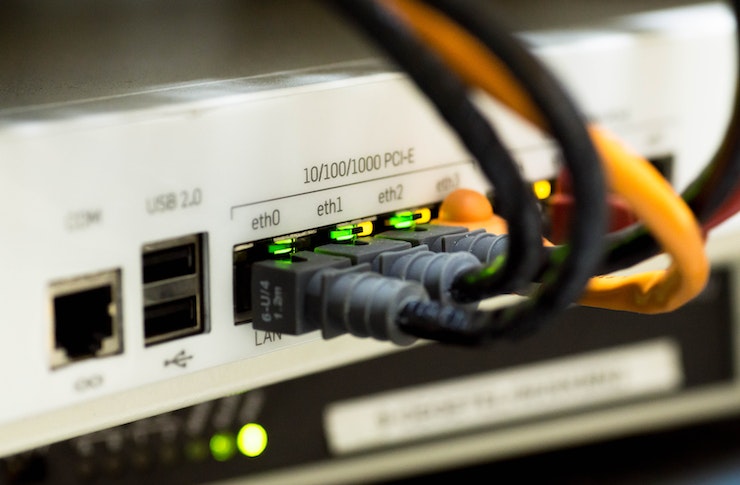Unlocking Spectrum Efficiency: The Promise of Dynamic Spectrum Access
Imagine a world where wireless devices seamlessly switch between frequency bands, optimizing connectivity in real-time. This isn't science fiction—it's the potential of Dynamic Spectrum Access (DSA), a groundbreaking approach to spectrum management that could revolutionize how we allocate and use our limited wireless resources. As demand for wireless connectivity skyrockets, DSA emerges as a beacon of hope for more efficient and flexible spectrum utilization.

This “spectrum crunch” has led to underutilized bands in some areas while others are congested, resulting in reduced performance and missed opportunities for innovation. Regulatory bodies and industry leaders alike have recognized the need for a more adaptive and efficient approach to spectrum management.
Enter Dynamic Spectrum Access
Dynamic Spectrum Access represents a paradigm shift in how we approach spectrum allocation and usage. At its core, DSA allows wireless devices to intelligently and autonomously access available spectrum bands based on real-time conditions, rather than being confined to pre-assigned frequencies.
This approach leverages advanced sensing technologies, machine learning algorithms, and cognitive radio principles to enable devices to identify and use available spectrum opportunistically. By doing so, DSA promises to dramatically increase spectrum efficiency, improve connectivity, and open up new possibilities for wireless communications.
Key Technologies Enabling DSA
Several cutting-edge technologies are driving the development and implementation of Dynamic Spectrum Access:
-
Cognitive Radio: These intelligent radio systems can detect available channels in the wireless spectrum and dynamically reconfigure their transmission parameters to optimize their use.
-
Machine Learning and AI: Advanced algorithms enable devices to predict spectrum availability, learn from past experiences, and make intelligent decisions about when and how to access different frequency bands.
-
Software-Defined Radio (SDR): This technology allows radio components that have traditionally been implemented in hardware to be defined by software, providing the flexibility needed for dynamic spectrum access.
-
Spectrum Sensing: Sophisticated sensing techniques allow devices to accurately detect the presence of primary users and identify available spectrum opportunities.
Regulatory Landscape and Challenges
The implementation of Dynamic Spectrum Access faces several regulatory challenges. Traditional spectrum management policies are based on static allocation, and shifting to a more dynamic model requires significant changes in regulatory frameworks.
However, regulatory bodies are increasingly recognizing the potential of DSA. The Federal Communications Commission (FCC) in the United States has taken steps to enable dynamic access in certain bands, such as TV White Spaces. Similarly, other countries are exploring regulatory frameworks that can accommodate DSA while protecting incumbent users.
Key challenges include:
-
Ensuring protection for primary spectrum users
-
Developing standardized protocols for spectrum sharing
-
Addressing potential security and privacy concerns
-
Harmonizing international regulations to enable global DSA deployments
Potential Applications and Benefits
The widespread adoption of Dynamic Spectrum Access could unlock a host of benefits and enable new applications:
-
Improved Rural Connectivity: DSA could help bridge the digital divide by allowing for more efficient use of spectrum in underserved areas.
-
Enhanced Emergency Communications: During disasters, DSA could enable emergency responders to access additional spectrum resources dynamically.
-
Smart Cities: DSA could support the dense network of sensors and devices required for smart city initiatives by optimizing spectrum use in urban environments.
-
Autonomous Vehicles: The ability to dynamically access spectrum could enhance vehicle-to-vehicle and vehicle-to-infrastructure communications.
-
Increased Network Capacity: By making more efficient use of available spectrum, DSA could significantly increase overall network capacity and performance.
The Road Ahead
While Dynamic Spectrum Access holds immense promise, its widespread implementation still faces technical, regulatory, and economic hurdles. Continued research and development are needed to refine DSA technologies, improve their reliability, and address potential interference issues.
Collaboration between regulators, industry stakeholders, and researchers will be crucial in developing robust frameworks for DSA implementation. As trials and pilot projects demonstrate the viability and benefits of DSA, we can expect to see increased adoption and integration into next-generation wireless networks.
The journey towards fully realized Dynamic Spectrum Access may be complex, but the potential rewards—in terms of improved connectivity, increased innovation, and more efficient use of our limited spectrum resources—make it a path worth pursuing. As we continue to push the boundaries of wireless technology, DSA stands as a beacon of hope for a more connected and spectrally efficient future.





